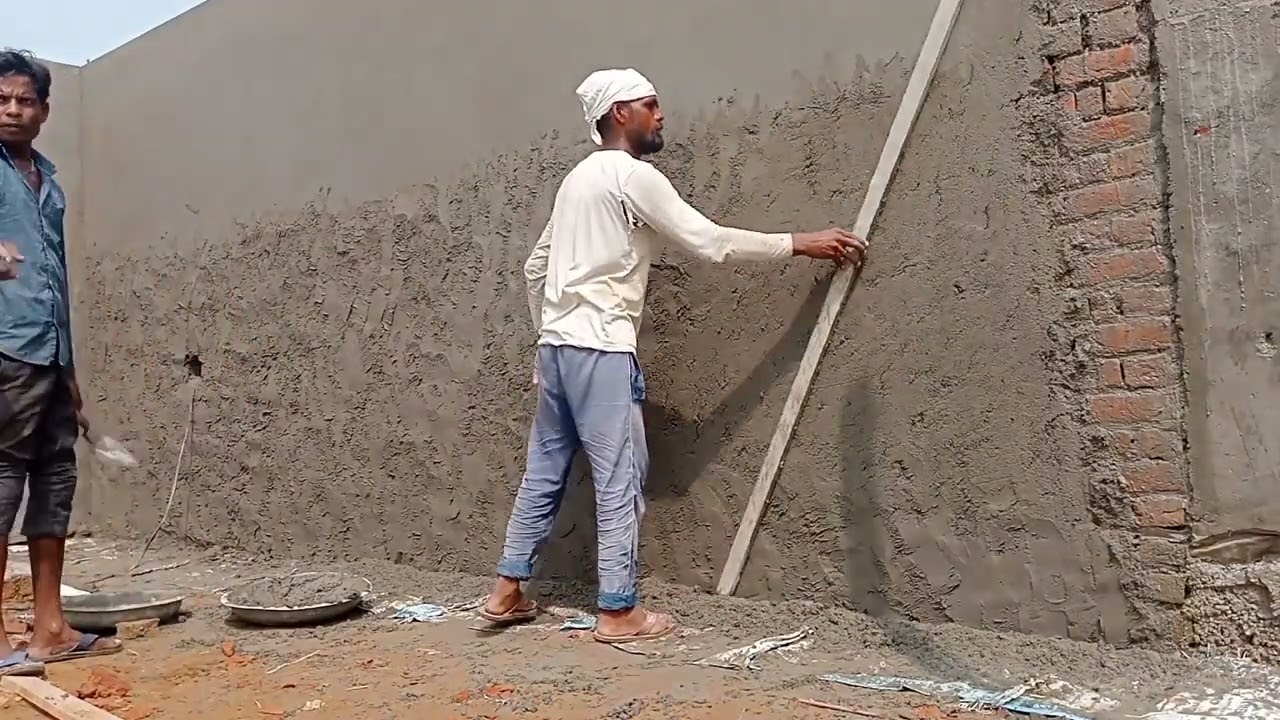Plastering is the application of a smooth and decorative layer of plaster onto walls and ceilings using tools like trowels. It serves to create an even surface, cover imperfections, and enhance aesthetics. Plaster can be made from gypsum, lime, or cement. The process requires skill and attention to detail for a flawless finish and is widely used in construction and renovation projects for both residential and commercial spaces.
How Many Cement Bags Required in 1 Square Meter Plaster?
We require 0.11 bag cement required in 1 square meter plaster work considering 12 mm thickness of plastering layer and 1:4 ratio of mortar mix.
Cement Bags Required in 1 Square Meter Plaster (Ratio 1:4)
Here 1:4 mortar ratio is considered for plastering, in which 1:4 mortar ratio means 1 part of cement and 4 parts of sand. Also, we are considering thickness of plastering layer as 12 mm for 1 meter square area.
1. Requirements for Plastering Work
- Area of plastering = 1 m²
- Mortar Ratio = 1:4
- Thickness of plastering layer = 12 mm
- Wastage factor and shrinkage factor = 1.54
2. Wet Volume of Mortar for 1 m² Plastering Area
Volume of Plastering Area
= Area of Plastering × Thickness of Mortar Layer
= 1 m² × 12 mm
= 1 m² × 0.012 m
= 0.012 m³
Volume of Plastering Area
= Area of Plastering × Thickness of Mortar Layer
= 1 m² × 12 mm
= 1 m² × 0.012 m
= 0.012 m³
3. Dry Volume of Mortar for 1 m² Plastering Area
Dry volume of plastering material
= Volume of Plastering × Factor of Wastage and Shrinkage
= 0.012 m³ × 1.54
= 0.01848 m³
4. Quantity of Cement Calculation
Quantity of Cement
= Dry Volume of Mortar × Density of Cement × (Proportion of Cement / Total Sum of Proportion)
= (0.01848 m³) × (1440 kg/m³) × (1/5)
= 5.32 kg or 0.11 bag of 50 kg cement
Cement Bags Required in 1 Square Meter Plaster (Ratio 1:5)
Here 1:5 mortar ratio is considered for plastering, in which 1:4 mortar ratio means 1 part of cement and 5 parts of sand. Also, we are considering thickness of plastering layer as 12 mm for 1 meter square area.
1. Requirements for Plastering Work
- Area of plastering = 1 m²
- Mortar Ratio = 1:5
- Thickness of plastering layer = 12 mm
- Wastage factor and shrinkage factor = 1.54.
2. Wet Volume of Mortar for 1 m² Plastering Area
Volume of Plastering Area
= Area of Plastering × Thickness of Mortar Layer
= 1 m² × 12 mm
= 1 m² × 0.012 m
= 0.012 m³
3. Dry Volume of Mortar for 1 m² Plastering Area
Dry volume of plastering material
= Volume of Plastering × Factor of Wastage and Shrinkage
= 0.012 m³ × 1.54
= 0.01848 m³
4. Quantity of Cement Calculation
Quantity of Cement
= Dry Volume of Mortar × Density of Cement × (Proportion of Cement / Total Sum of Proportion)
= (0.01848 m³) × (1440 kg/m³) × (1/6)
= 4.435 kg or 0.089 bag of 50 kg cement.
So that, 4.435 kg or 0.089 bag of 50 kg cement is required for 1 square meter plaster.



